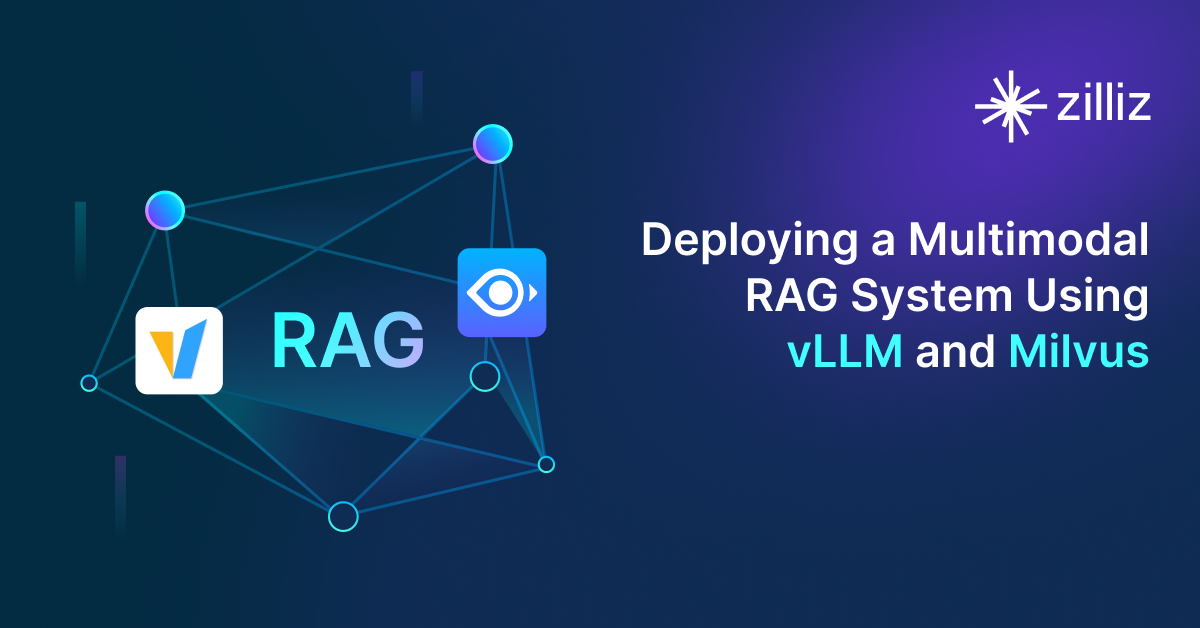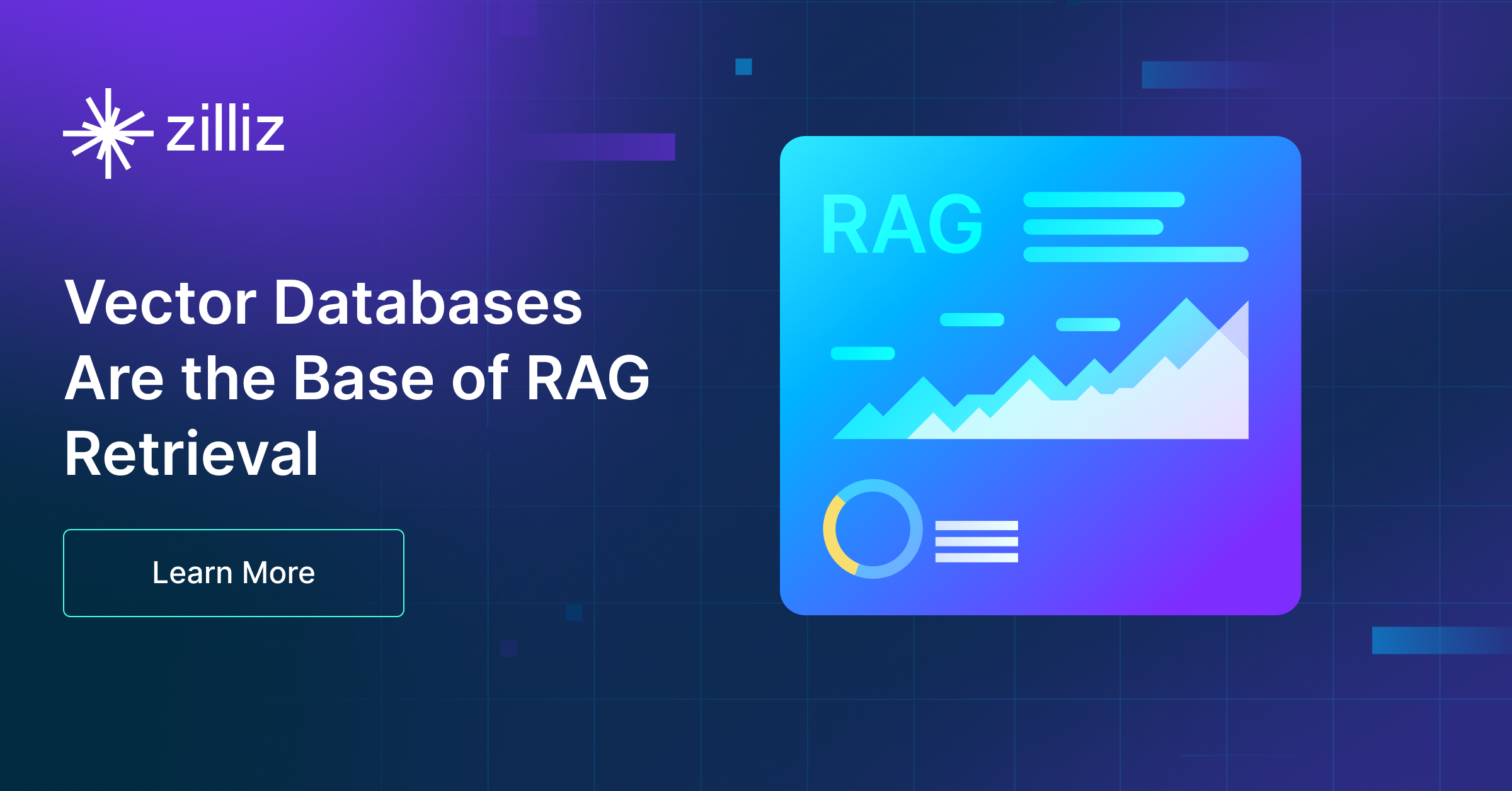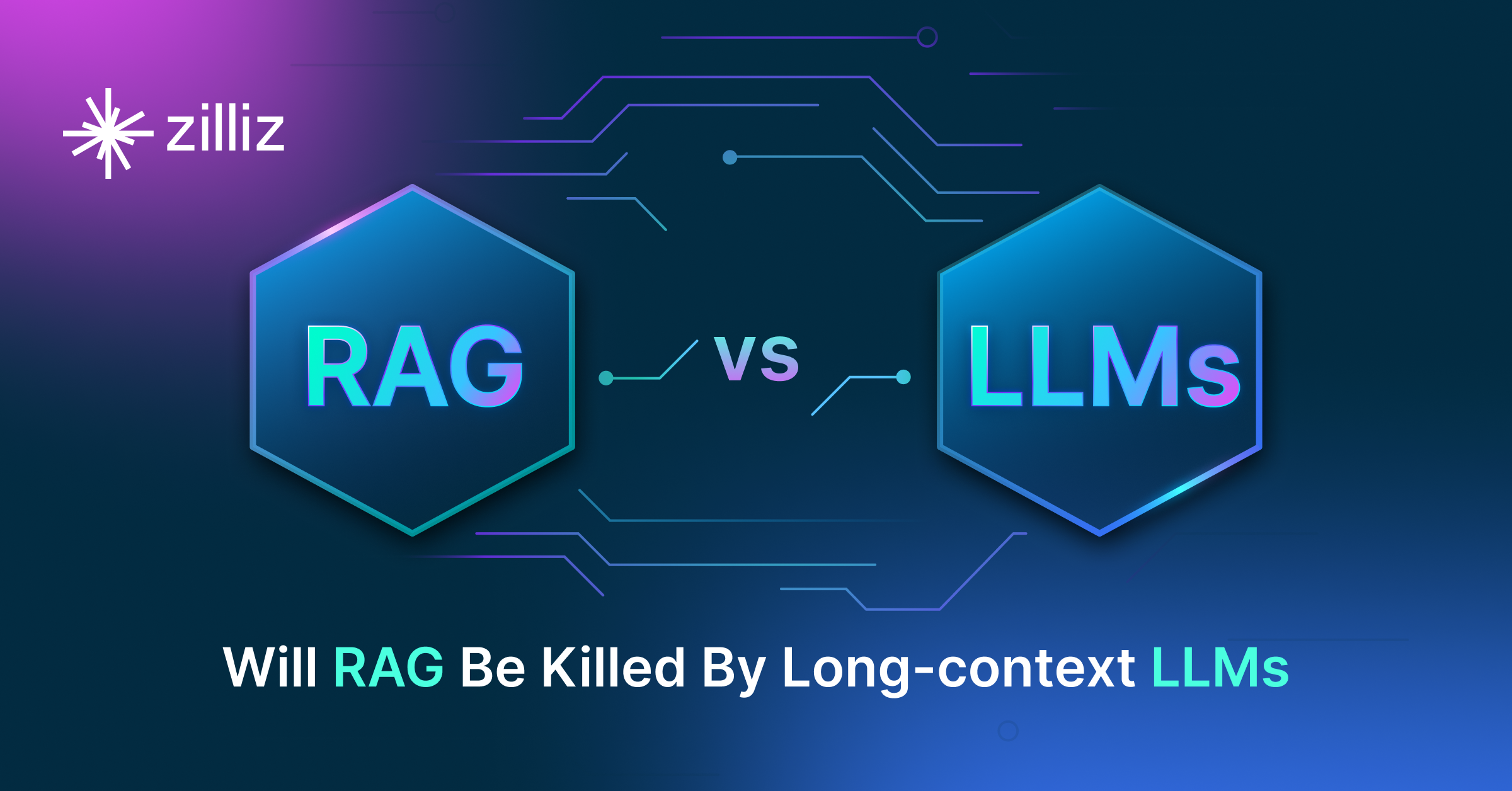Build RAG Chatbot with LangChain, LangChain vector store, Azure GPT-4o mini, and OpenAI text-embedding-3-small
Introduction to RAG
Retrieval-Augmented Generation (RAG) is a game-changer for GenAI applications, especially in conversational AI. It combines the power of pre-trained large language models (LLMs) like OpenAI’s GPT with external knowledge sources stored in vector databases such as Milvus and Zilliz Cloud, allowing for more accurate, contextually relevant, and up-to-date response generation. A RAG pipeline usually consists of four basic components: a vector database, an embedding model, an LLM, and a framework.
Key Components We'll Use for This RAG Chatbot
This tutorial shows you how to build a simple RAG chatbot in Python using the following components:
- LangChain: An open-source framework that helps you orchestrate the interaction between LLMs, vector stores, embedding models, etc, making it easier to integrate a RAG pipeline.
- LangChain in-memory vector store: an in-memory, ephemeral vector store that stores embeddings in-memory and does an exact, linear search for the most similar embeddings. The default similarity metric is cosine similarity, but can be changed to any of the similarity metrics supported by ml-distance. It is intended for demos and does not yet support ids or deletion. (If you want a much more scalable solution for your apps or even enterprise projects, we recommend using Zilliz Cloud, which is a fully managed vector database service built on the open-source Milvusand offers a free tier supporting up to 1 million vectors.)
- Azure GPT-4o Mini: A compact version of the powerful GPT-4 architecture, designed for efficient processing in resource-constrained environments. It delivers robust performance in natural language understanding and generation, making it suitable for chatbots, customer support, and content creation. Ideal for applications where speed and scalability are essential without compromising on quality.
- OpenAI text-embedding-3-small: This model specializes in generating high-quality text embeddings for various NLP tasks, offering a balance between performance and computational efficiency. Its strengths lie in semantic understanding and similarity comparisons, making it ideal for applications in search, recommendation systems, and clustering tasks where quick processing is essential.
By the end of this tutorial, you’ll have a functional chatbot capable of answering questions based on a custom knowledge base.
Note: Since we may use proprietary models in our tutorials, make sure you have the required API key beforehand.
Step 1: Install and Set Up LangChain
%pip install --quiet --upgrade langchain-text-splitters langchain-community langgraph
Step 2: Install and Set Up Azure GPT-4o mini
pip install -qU "langchain[openai]"
import getpass
import os
if not os.environ.get("AZURE_OPENAI_API_KEY"):
os.environ["AZURE_OPENAI_API_KEY"] = getpass.getpass("Enter API key for Azure: ")
from langchain_openai import AzureChatOpenAI
llm = AzureChatOpenAI(
azure_endpoint=os.environ["AZURE_OPENAI_ENDPOINT"],
azure_deployment=os.environ["AZURE_OPENAI_DEPLOYMENT_NAME"],
openai_api_version=os.environ["AZURE_OPENAI_API_VERSION"],
)
Step 3: Install and Set Up OpenAI text-embedding-3-small
pip install -qU langchain-openai
import getpass
import os
if not os.environ.get("OPENAI_API_KEY"):
os.environ["OPENAI_API_KEY"] = getpass.getpass("Enter API key for OpenAI: ")
from langchain_openai import OpenAIEmbeddings
embeddings = OpenAIEmbeddings(model="text-embedding-3-small")
Step 4: Install and Set Up LangChain vector store
pip install -qU langchain-core
from langchain_core.vectorstores import InMemoryVectorStore
vector_store = InMemoryVectorStore(embeddings)
Step 5: Build a RAG Chatbot
Now that you’ve set up all components, let’s start to build a simple chatbot. We’ll use the Milvus introduction doc as a private knowledge base. You can replace it with your own dataset to customize your RAG chatbot.
import bs4
from langchain import hub
from langchain_community.document_loaders import WebBaseLoader
from langchain_core.documents import Document
from langchain_text_splitters import RecursiveCharacterTextSplitter
from langgraph.graph import START, StateGraph
from typing_extensions import List, TypedDict
# Load and chunk contents of the blog
loader = WebBaseLoader(
web_paths=("https://milvus.io/docs/overview.md",),
bs_kwargs=dict(
parse_only=bs4.SoupStrainer(
class_=("doc-style doc-post-content")
)
),
)
docs = loader.load()
text_splitter = RecursiveCharacterTextSplitter(chunk_size=1000, chunk_overlap=200)
all_splits = text_splitter.split_documents(docs)
# Index chunks
_ = vector_store.add_documents(documents=all_splits)
# Define prompt for question-answering
prompt = hub.pull("rlm/rag-prompt")
# Define state for application
class State(TypedDict):
question: str
context: List[Document]
answer: str
# Define application steps
def retrieve(state: State):
retrieved_docs = vector_store.similarity_search(state["question"])
return {"context": retrieved_docs}
def generate(state: State):
docs_content = "\n\n".join(doc.page_content for doc in state["context"])
messages = prompt.invoke({"question": state["question"], "context": docs_content})
response = llm.invoke(messages)
return {"answer": response.content}
# Compile application and test
graph_builder = StateGraph(State).add_sequence([retrieve, generate])
graph_builder.add_edge(START, "retrieve")
graph = graph_builder.compile()
Test the Chatbot
Yeah! You've built your own chatbot. Let's ask the chatbot a question.
response = graph.invoke({"question": "What data types does Milvus support?"})
print(response["answer"])
Example Output
Milvus supports various data types including sparse vectors, binary vectors, JSON, and arrays. Additionally, it handles common numerical and character types, making it versatile for different data modeling needs. This allows users to manage unstructured or multi-modal data efficiently.
Optimization Tips
As you build your RAG system, optimization is key to ensuring peak performance and efficiency. While setting up the components is an essential first step, fine-tuning each one will help you create a solution that works even better and scales seamlessly. In this section, we’ll share some practical tips for optimizing all these components, giving you the edge to build smarter, faster, and more responsive RAG applications.
LangChain optimization tips
To optimize LangChain, focus on minimizing redundant operations in your workflow by structuring your chains and agents efficiently. Use caching to avoid repeated computations, speeding up your system, and experiment with modular design to ensure that components like models or databases can be easily swapped out. This will provide both flexibility and efficiency, allowing you to quickly scale your system without unnecessary delays or complications.
LangChain in-memory vector store optimization tips
LangChain in-memory vector store is just an ephemeral vector store that stores embeddings in-memory and does an exact, linear search for the most similar embeddings. It has very limited features and is only intended for demos. If you plan to build a functional or even production-level solution, we recommend using Zilliz Cloud, which is a fully managed vector database service built on the open-source Milvus and offers a free tier supporting up to 1 million vectors.)
Azure GPT-4o mini optimization tips
Azure GPT-4o mini is a cost-efficient, low-latency model optimized for fast RAG applications. Improve retrieval by ensuring only the top-ranked, most relevant documents are included in the context to minimize unnecessary token consumption. Structure prompts with bullet points or numbered lists for clarity. Adjust temperature settings between 0.1 and 0.2 for precision, modifying top-p as needed for response diversity. To enhance performance, batch multiple API requests and implement caching for frequently queried information. Azure’s infrastructure allows for auto-scaling, so configure dynamic scaling to handle varying workloads efficiently. Stream responses for improved real-time performance, ensuring fast and interactive user experiences. If used in a pipeline, assign GPT-4o mini to preliminary filtering or summarization while reserving larger models for complex tasks.
OpenAI text-embedding-3-small optimization tips
OpenAI text-embedding-3-small offers a lightweight alternative with faster processing speeds, making it well-suited for real-time RAG applications. Improve retrieval performance by fine-tuning similarity thresholds to minimize false positives in ANN searches. Keep input text concise and remove redundant information before embedding to maximize embedding efficiency. Utilize caching for frequently queried text embeddings to reduce unnecessary recomputation. When scaling, distribute embedding generation across multiple workers to optimize throughput. Apply post-processing filters, such as cosine similarity cutoffs, to refine search results. Consider hybrid search (dense + keyword-based) for improved retrieval when dealing with varied query types.
By implementing these tips across your components, you'll be able to enhance the performance and functionality of your RAG system, ensuring it’s optimized for both speed and accuracy. Keep testing, iterating, and refining your setup to stay ahead in the ever-evolving world of AI development.
RAG Cost Calculator: A Free Tool to Calculate Your Cost in Seconds
Estimating the cost of a Retrieval-Augmented Generation (RAG) pipeline involves analyzing expenses across vector storage, compute resources, and API usage. Key cost drivers include vector database queries, embedding generation, and LLM inference.
RAG Cost Calculator is a free tool that quickly estimates the cost of building a RAG pipeline, including chunking, embedding, vector storage/search, and LLM generation. It also helps you identify cost-saving opportunities and achieve up to 10x cost reduction on vector databases with the serverless option.
 Calculate your RAG cost
Calculate your RAG cost
What Have You Learned?
What have you learned?! Wow, what an incredible journey this tutorial has been! We’ve seamlessly integrated a robust framework with a powerful vector database, a state-of-the-art large language model, and an exceptional embedding model to create a cutting-edge Retrieval-Augmented Generation (RAG) system. Isn’t it amazing how each component plays a vital role? The framework serves as the backbone, connecting everything together and enabling smooth interactions. Thanks to the vector database, you're now equipped to power fast and efficient searches, ensuring you can retrieve your data in the blink of an eye!
And let’s not forget the brilliance of the LLM, which brings conversational intelligence to your applications, allowing for natural, engaging interactions. With the embedding model generating rich semantic representations, you can dive deep into the context of your data and extract meaningful insights. Plus, we sprinkled some optimization tips and even included a free cost calculator to help you keep your projects efficient and budget-friendly!
So, what’s next? Don’t let this knowledge sit idle! Start building, optimizing, and innovating your own RAG applications. The tools and skills you’ve acquired here are stepping stones to extraordinary possibilities. Embrace your creativity, push the boundaries, and who knows—your next project might just revolutionize how we interact with information! Get started today!
Further Resources
🌟 In addition to this RAG tutorial, unleash your full potential with these incredible resources to level up your RAG skills.
- How to Build a Multimodal RAG | Documentation
- How to Enhance the Performance of Your RAG Pipeline
- Graph RAG with Milvus | Documentation
- How to Evaluate RAG Applications - Zilliz Learn
- Generative AI Resource Hub | Zilliz
We'd Love to Hear What You Think!
We’d love to hear your thoughts! 🌟 Leave your questions or comments below or join our vibrant Milvus Discord community to share your experiences, ask questions, or connect with thousands of AI enthusiasts. Your journey matters to us!
If you like this tutorial, show your support by giving our Milvus GitHub repo a star ⭐—it means the world to us and inspires us to keep creating! 💖
- Introduction to RAG
- Key Components We'll Use for This RAG Chatbot
- Step 1: Install and Set Up LangChain
- Step 2: Install and Set Up Azure GPT-4o mini
- Step 3: Install and Set Up OpenAI text-embedding-3-small
- Step 4: Install and Set Up LangChain vector store
- Step 5: Build a RAG Chatbot
- Optimization Tips
- RAG Cost Calculator: A Free Tool to Calculate Your Cost in Seconds
- What Have You Learned?
- Further Resources
- We'd Love to Hear What You Think!
Content
Vector Database at Scale
Zilliz Cloud is a fully-managed vector database built for scale, perfect for your RAG apps.
Try Zilliz Cloud for Free


